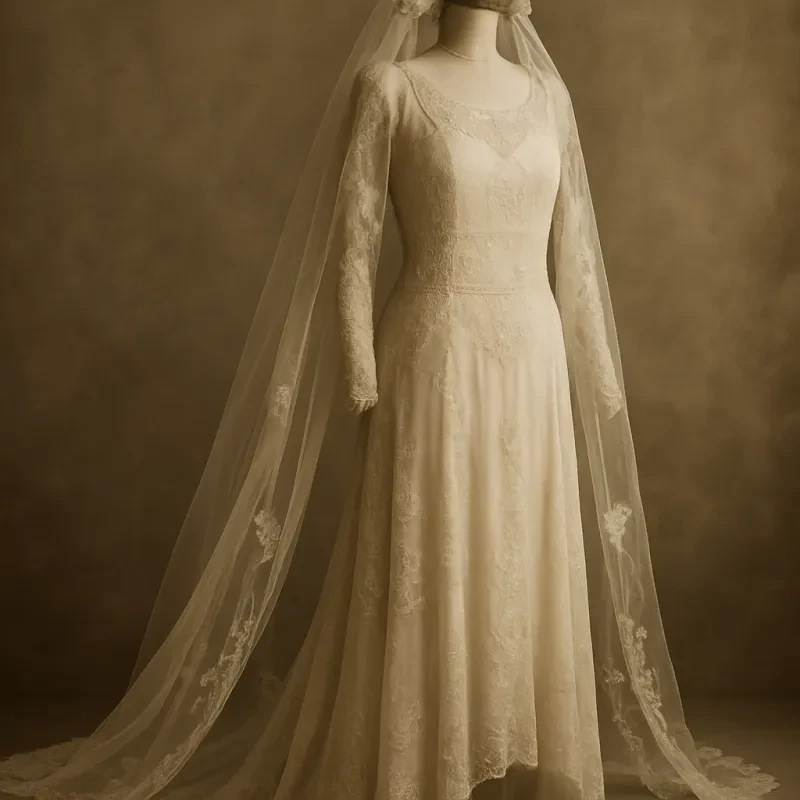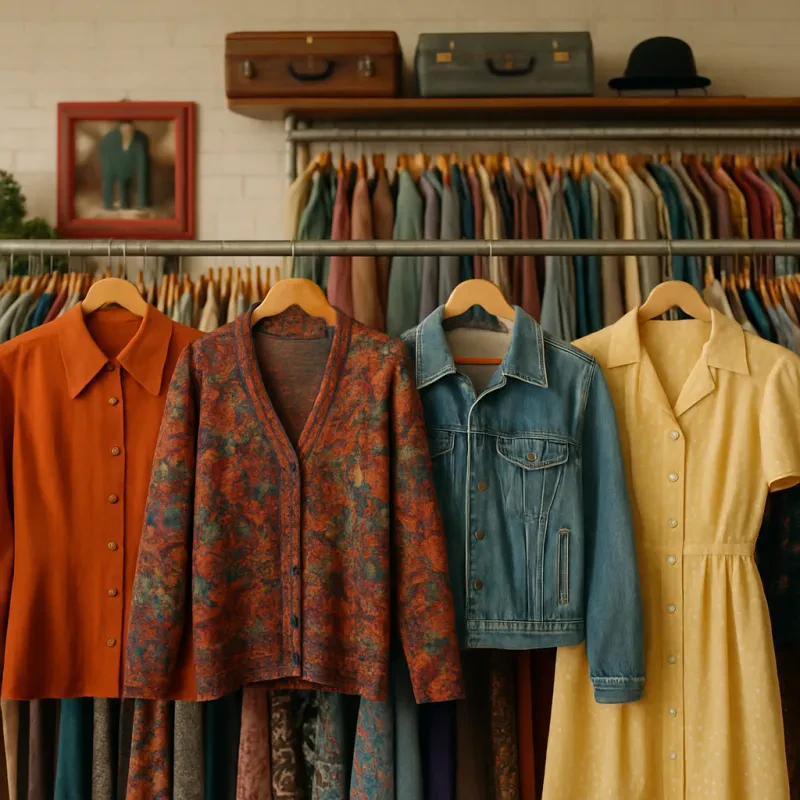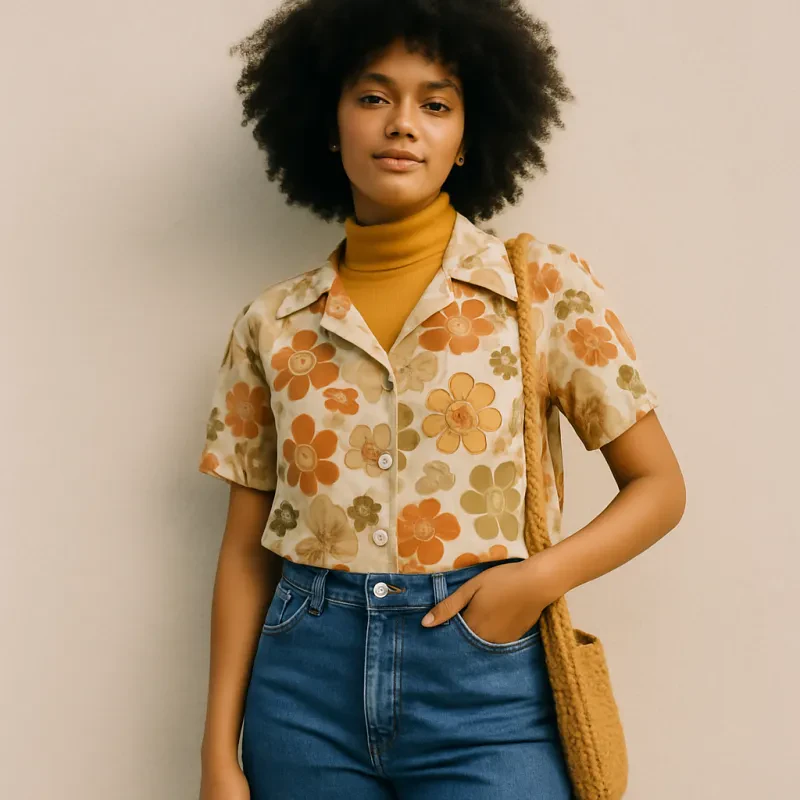In the 1960s, a cultural revolution took hold of London, giving birth to one of the most iconic youth movements in history: Mod culture. The Mods, short for modernists, were a subculture known for their distinctive fashion sense and music taste. They emerged as a reaction against the conservative post-war society, seeking to redefine style, music, and social mores in the heart of Swinging London.
Mod fashion became synonymous with the vibrant and exciting atmosphere of Swinging London. Pioneering Mod designers such as Mary Quant, Quant by Quant and Biba, created clothing that broke away from traditional norms. The Mods rejected the somber tones and conservative cuts of the previous decade. Instead, they embraced bold patterns, vibrant colors, and avant-garde silhouettes. The classic elements of the Mod fashion revolution included slim-fitted suits for men and women, intricate geometric and psychedelic patterns, turtleneck sweaters, A-line skirts, and mini-dresses that revolutionized women's fashion.
Mod culture served as an expression of individuality and rebellion against class and gender expectations. It was not only about fashion but also about the lifestyle. The Mods were avid followers of modern jazz, R&B, and soul music, gathering at iconic London clubs like The Marquee and The Flamingo. Their sleek, tailored attire was a visual representation of their love for modernity, music, and the ever-evolving spirit of Swinging London. Mod fashion still exerts a significant influence today, and its legacy continues to inspire designers, artists, and fashion enthusiasts around the globe.
Fashion Fusion: How Swinging London Sparked the Mod Movement
In the mid-1960s, an electrifying cultural movement known as the Mod subculture emerged in the heart of Swinging London. It was a period of rebellion against traditional norms, and fashion played a central role in expressing this newfound sense of freedom and individuality. Mod fashion became synonymous with bold, vibrant designs and a rejection of conservative dressing, inspiring a generation to break away from mainstream styles.
The mod movement brought together a fascinating fusion of influences, combining elements of Italian tailoring, French avant-garde fashion, and American pop art. The mod fashion scene was all about sharp cuts, sleek silhouettes, and a focus on clean lines. Tailored suits with narrow lapels became the hallmark for men, while women embraced mini skirts, geometric patterns, and contrasting colors in their outfits.
Iconic fashion boutiques such as Carnaby Street and Kings Road became the epicenters of the mod fashion revolution. These vibrant streets became a breeding ground for innovative designers and influential style icons, who pushed boundaries and reshaped the fashion landscape. Names like Mary Quant, who popularized the mini skirt, and the Beatles, who made collarless jackets a symbol of mod fashion, became synonymous with the movement.
The mod subculture's impact on fashion was profound, reaching far beyond London streets. Its influence could be seen worldwide, with young people from New York to Tokyo embracing the mod look. Decades later, its enduring spirit can still be felt in contemporary fashion, as designers continue to draw inspiration from the fearless and boundary-pushing fashionistas of that iconic era.
Exploring Carnaby Street: The Epicenter of Mod Fashion
Exploring Carnaby Street: The Epicenter of Mod Fashion
If there is one street that perfectly encapsulates the essence of Mod fashion and the vibrant atmosphere of 1960s Swinging London, it is Carnaby Street. Located in the heart of the city's trendy Soho district, Carnaby Street quickly became the go-to destination for young mods looking to express their unique sense of style and make a statement.
Carnaby Street's rise to fame began in the early 1960s when a handful of innovative boutique shops opened their doors. These boutiques offered an alternative to the mainstream fashion scene, embracing bold colors, unconventional patterns, and daring designs. The street's eclectic mix of fashion, combined with its lively atmosphere, soon attracted a growing crowd of trendsetters, musicians, and fashionistas.
As Carnaby Street gained popularity, it became a hotbed of creativity and inspiration for both fashion designers and mod enthusiasts. With the latest trends constantly emerging from the street's boutiques, young mods would flock to Carnaby Street to discover the newest styles and incorporate them into their wardrobe. The street's vibrant energy and ever-changing fashion scene ultimately solidified its reputation as the epicenter of Mod fashion.
Mod Icons: Unveiling London's Most Influential Style Tastemakers
The Mod fashion movement, born in the vibrant streets of London during the 1960s, left an indelible mark on the world of style and subculture. With its bold and innovative approach, Mod style became synonymous with rebellion, youthful energy, and a desire to break free from traditional conventions. At the heart of this influential movement were the Mod icons, individuals who embodied the spirit of the era and shaped the fashion landscape of Swinging London.
One such legendary figure is Mary Quant, the British fashion designer credited with popularizing the miniskirt. Quant's innovative designs, characterized by geometric patterns and bright colors, captured the essence of Mod style and challenged societal norms. Her iconic creations symbolized the liberation and empowerment of women, making her an undeniable force in the fashion industry.
Another Mod fashion pioneer was Carnaby Street tailor, John Stephen. Often referred to as the "King of Carnaby Street," Stephen was instrumental in transforming the once-dull street into an epicenter of fashion and youth culture. His vibrant and daring designs attracted well-known musicians and celebrities, earning him a reputation as the go-to tailor for the fashionable elite. Stephen's boutique, named "His Clothes," became a must-visit destination for Mod enthusiasts seeking cutting-edge fashion.
Lastly, the legendary Twiggy needs no introduction. Considered a cultural icon and one of the world's first supermodels, Twiggy epitomized the Mod aesthetic with her androgynous look and doe-eyed gaze. Her skinny frame, short haircuts, and long false lashes became synonymous with the Mod movement, and she captured the imagination of millions worldwide. Twiggy's influence extended beyond the fashion world, as she played a key role in popularizing the youthful and unconventional spirit of Mod culture throughout the globe.


